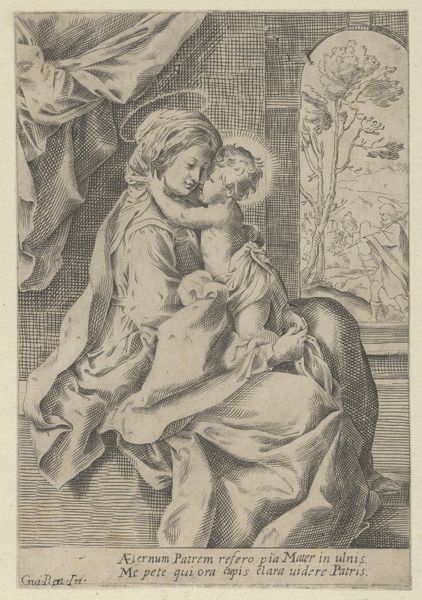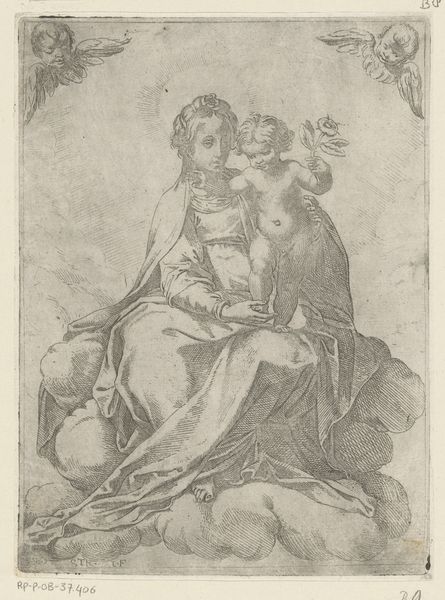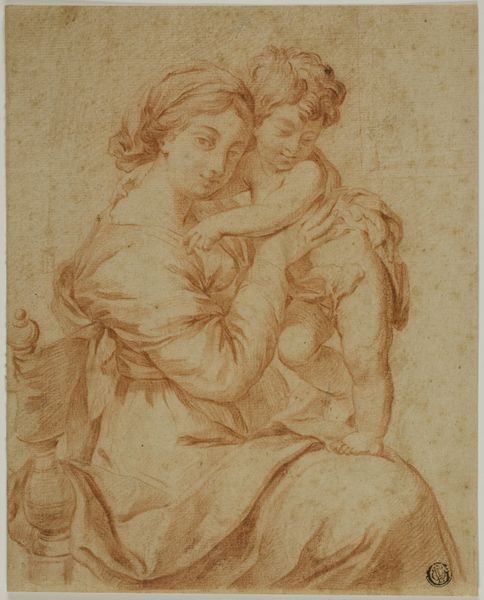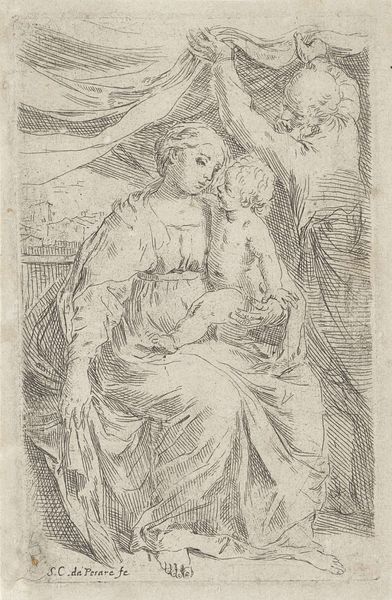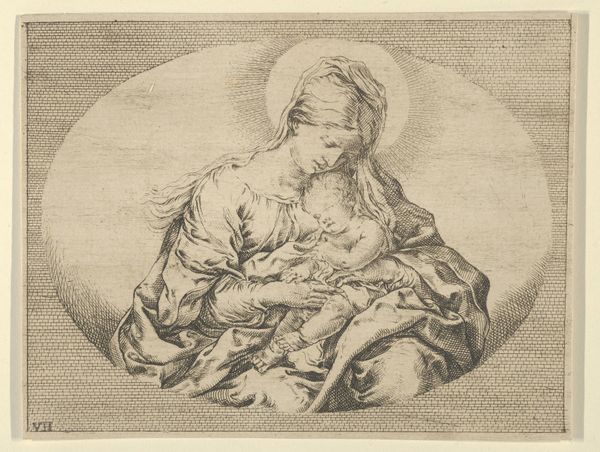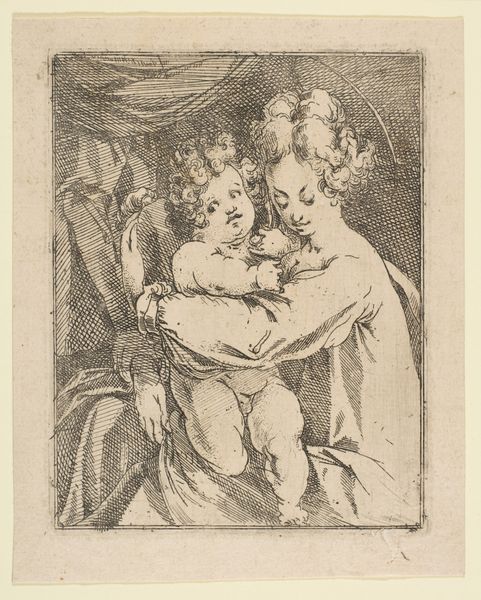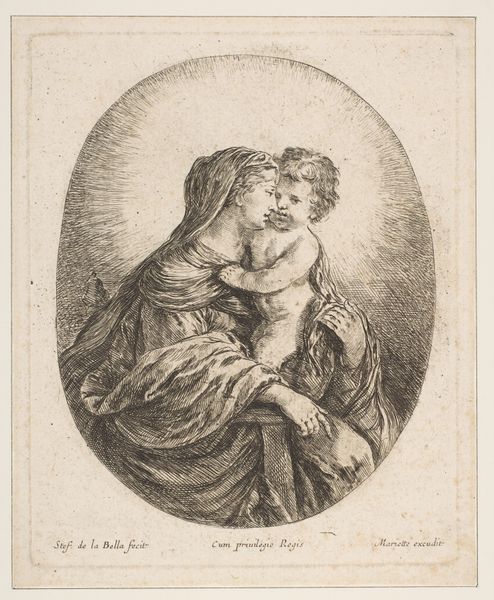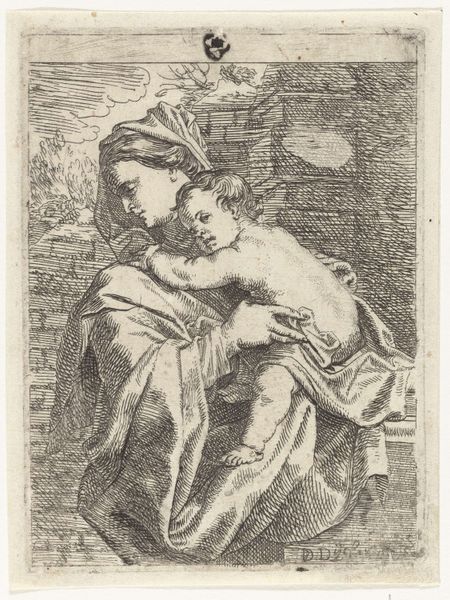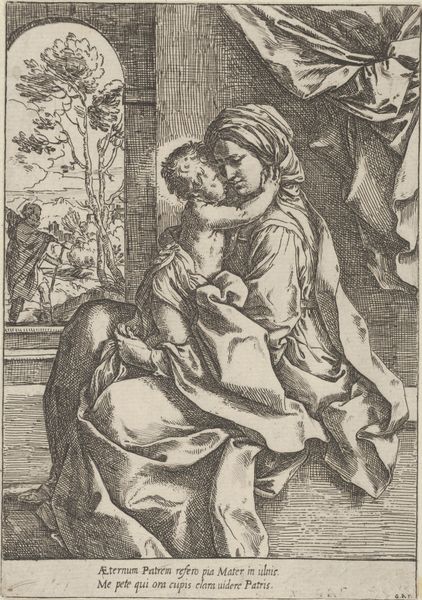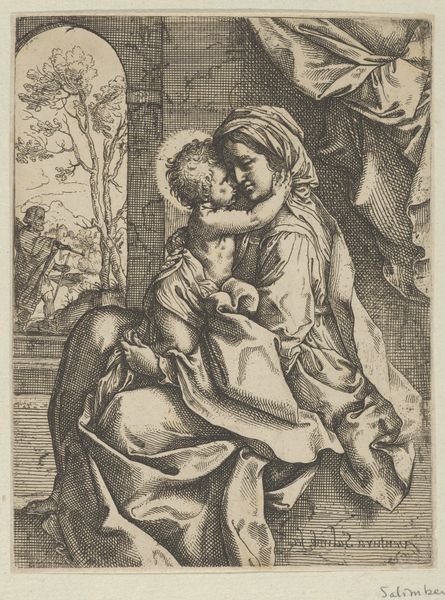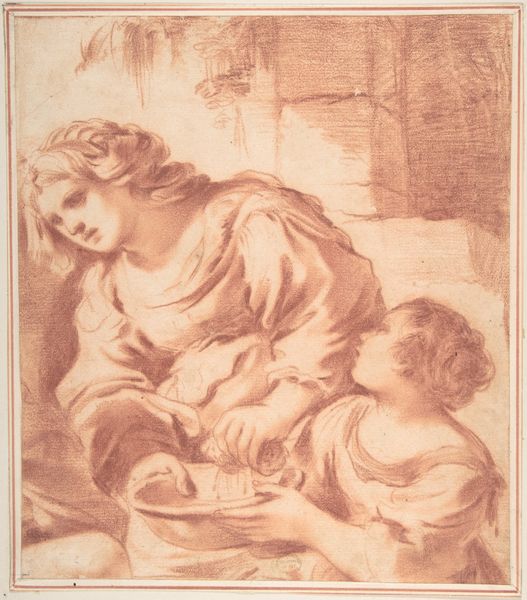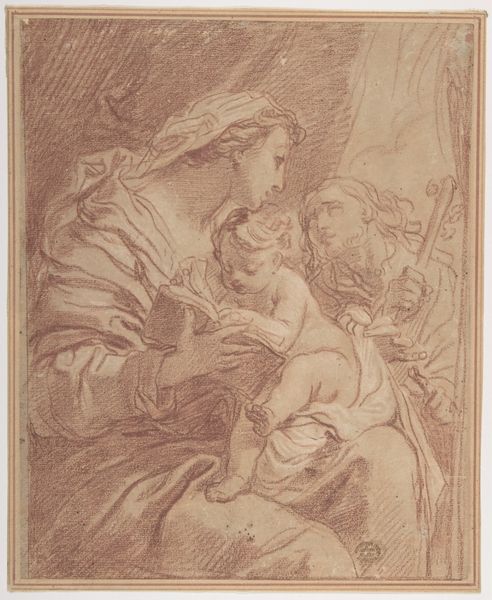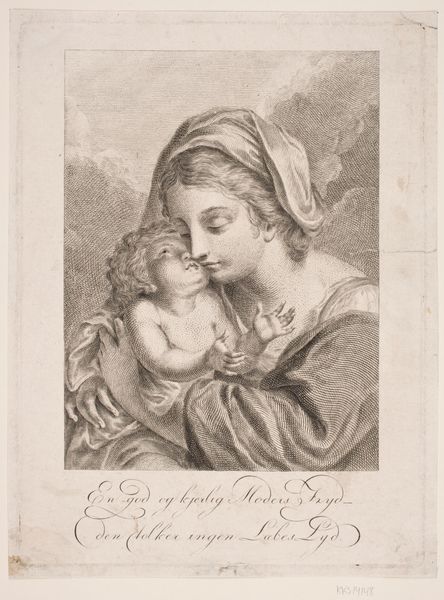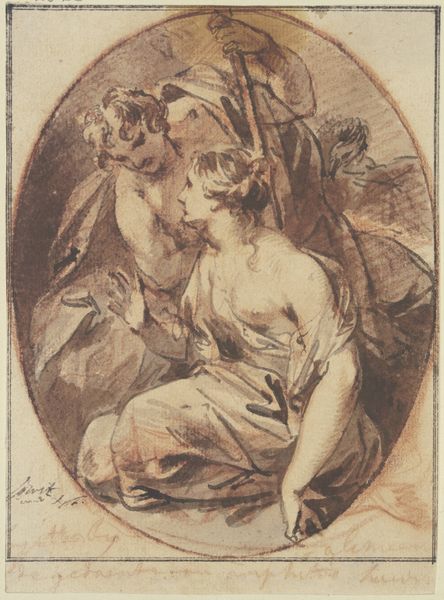
Virgin and Christ Child, an octagonal composition 1644 - 1654
0:00
0:00
drawing, print
#
drawing
# print
#
figuration
#
history-painting
#
italian-renaissance
Dimensions: Sheet (trimmed to plate): 3 3/8 × 3 9/16 in. (8.6 × 9 cm)
Copyright: Public Domain
Editor: Here we have Stefano della Bella's "Virgin and Christ Child, an octagonal composition," created between 1644 and 1654. It’s a drawing and print displayed at the Metropolitan Museum of Art. The cross-hatching gives it so much texture, almost like fabric itself. What stands out to you in this piece? Curator: What immediately grabs my attention is the etching technique. Note the varying depths of the lines created through the process of biting the plate with acid. Consider the artist's access to materials: What quality of paper was used, and how accessible were these to artisans at this time? Editor: So, you're focusing on the physical making of the art first, not the religious scene itself? Curator: Exactly. Look closely; the image depicts a traditional subject using innovative and relatively new printing processes. It is not enough to analyze the subjects in the art, but to also acknowledge the artist's work that allowed the scene to materialize. How does the printmaking process itself – the layering of ink, the pressure, the affordances of the materials - shape the message it communicates? The availability of the drawing and print in that time shaped a different social narrative of the subjects in it, what do you think about that? Editor: That's fascinating! It shifts the focus from purely aesthetic appreciation to understanding the artwork as a product of its time. Considering who consumed these prints and their socio-economic status opens a whole new dimension. Curator: Precisely. Think of the artist labor, the economic value of this piece in the 17th century versus today. That intersection between material reality and artistic expression becomes central to our understanding. Editor: I see it now – it’s not just about the Virgin and Child, but about the very means by which their image was reproduced and disseminated. Thanks, this has totally shifted my perspective! Curator: Glad to share my thoughts. Examining art through this material lens offers fresh insights into not just art history, but cultural and economic history, too.
Comments
No comments
Be the first to comment and join the conversation on the ultimate creative platform.
